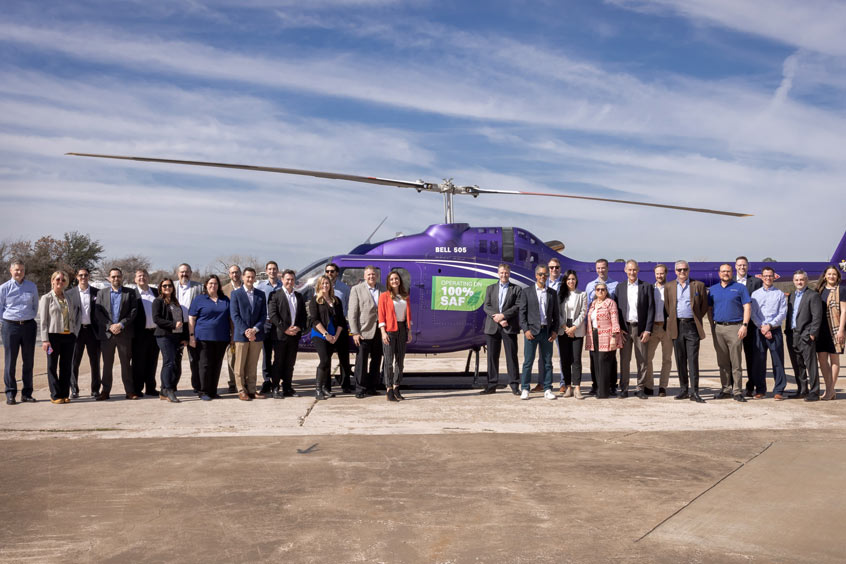Why visit ACE ’25?

The Bell 505 helicopter has completed its first flight fuelled solely by 100 per cent sustainable aviation fuel (SAF), the first ever single engine helicopter to do so. Bell collaborated with Safran Helicopter Engines, Neste, GKN Aerospace and Virent to make this flight possible.
“This flight is a monumental achievement for sustainability and decarbonisation in the rotorcraft industry,” says Bell executive vice president, commercial business Michael Thacker. “Showcasing a single engine aircraft's flight capabilities with 100 per cent SAF signals Bell's commitment to alternative fuel usage and builds on its sustainability practices in its flight operations.”
Safran executive vice president, programmes Valentin Safir adds: “SAF is one of the key pillars in our strategy to decarbonise the helicopter industry. Our engines are certified to operate on up to 50 per cent SAF, and our objective is to certify in the coming years the use of 100 per cent SAF, which can potentially result in carbon lifecycle emissions reductions by up to 80 per cent.”
To achieve this flight, Bell collaborated with Safran Helicopter Engines, manufacturer of the Arrius 2R engine on the Bell 505; GKN Aerospace, the fuel system component supplier; Neste, the SAF supplier; and Virent, a Marathon Petroleum Corp subsidiary that manufactures renewable fuels and chemicals. Safran Helicopter Engines and GKN Aerospace conducted thorough testing on the engine and fuel system components.
Neste and Virent collaborated to blend, test and deliver the SAF for this project as a 100 per cent drop-in fuel. SAF, made from used cooking oil or other bio-based feedstocks, must typically be blended with petroleum products because it doesn't include a component called 'aromatics', which is required to meet today's aviation fuel specifications. Virent manufactures an aromatics component made from renewable plant sugars, which was added to Neste's neat SAF, eliminating the need to blend SAF with petroleum fuel. The SAF supplied for this test flight by Neste and Virent is therefore a '100 per cent drop-in' replacement for petroleum-based aviation fuel, requiring no engine modifications.
“Neste is working closely together with forerunners in the aviation industry on verifying that aircraft can run safely on 100 per cent SAF. This successful collaboration demonstrates that we are one step closer to enabling the entire aviation industry to take full advantage as the key means to significantly reduce greenhouse gas emissions of air travel,” says Neste vice president global commercial and technical, renewable aviation Jonathan Wood.
Bell's own training fleet and demonstration aircraft currently use SAF in their operations. The team continues to guide customer conversations around its implementation and monitors SAF testing in a dedicated Bell 505 with Safran Helicopter Engines. This flight supports Textron's Achieve 2025 Sustainable Footprint goal for 20 per cent reduction in greenhouse gas emissions across the enterprise, among other sustainability initiatives.
The Bell 505 is a five seat aircraft designed for safety and efficiency while using the most advanced technology to date. The platform uses a fully integrated Garmin G1000H NXi avionics suite and Safran Arrius 2R engine with a dual-channel FADEC.